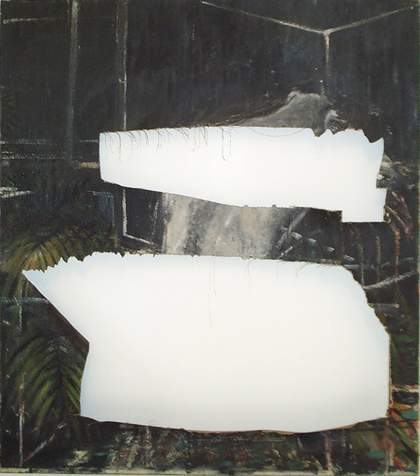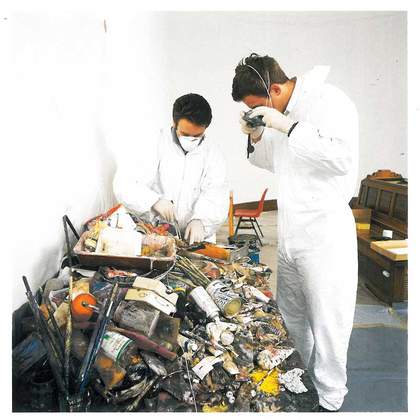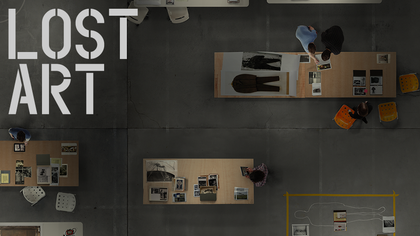Study for Man with Microphones 1946
Francis Bacon’s Study for Man with Microphones was completed in 1946 and exhibited twice that year. At some point in the next fifteen years Bacon reworked the composition and in 1962 it was exhibited in dramatically revised form as Gorilla with Microphones.
Bacon found it difficult to stop working on his paintings; his canvases often became so clogged with pigment that they had to be discarded. He also routinely destroyed works he was not pleased with. After his death in 1992, Bacon’s London studio was discovered to contain almost one hundred slashed or destroyed canvases alongside thousands of books, photographs and other reference materials. Gorilla with Microphones was among the destroyed works, with two large sections cut from the centre of the canvas. Although the artist clearly intended to render the painting unviewable, what remains offers valuable insights into Bacon’s approach to art. Tantalisingly, Bacon once described his destroyed works as among his best, admitting regret at their loss. Conceivably – although we will never be in a position to judge – Study for Man with Microphones may well have been among Bacon’s most powerful early works.
Bacon was fascinated with the theme of the speech-making politician: his studio was filled with press photographs of Hitler and his Nazi henchmen Herman Goering and Joseph Goebbels, whose speeches before and during the war had created an indelible memory in the minds of Bacon’s generation. In Study for Man with Microphones the male figure is clearly a public orator, caught seemingly mid-sentence. His white shirt and dark suit were standard dress for British politicians, while the black umbrella was associated with Neville Chamberlain, the pre-war British Prime Minister who often carried an umbrella (and in some cartoons was even represented as an umbrella).
Unsold after its exhibitions in 1946, the painting was returned to the artist and remained in the artist’s studio from 1946 to 1962, when it was exhibited at the Galleria d’Arte Galatea in Milan. However, the work was now dramatically altered. Although the microphones remained, the man seated under a shadowy umbrella had been replaced with the truncated torso of a gorilla, its back turned to the viewer. In the 1962 catalogue the work also had a new title: Gorilla with Microphones.
Exactly when Bacon repainted Study for Man with Microphones is uncertain. Author of Bacon’s 1964 catalogue raisonné, Ronald Alley placed the revisions at around 1947–8 as the changes appear similar to works from that period. However, even with the new title Gorilla with Microphones, the link with political satire remained: there was an established tradition, in particular among the British press, of associating powerful political figures with monkeys or gorillas.
Yet Bacon was not happy with the changes he had made. Two years after the Milan exhibition, the work was listed in Alley’s 1964 catalogue as ‘abandoned’, though crucially it was not classified among the destroyed works. After Bacon’s death in 1992 his studio at 7 Reece Mews, Kensington – where he had worked for over thirty years – was found full of destroyed canvases. Portraits with faces cut out were piled on the floor. Larger lacerated works were stacked against the windows and walls. In some cases the damage had evidently been inflicted even while the paint was still wet. In others, the fracturing of the dry paint showed they had been cut long after completion. This was the case with Gorilla with Microphones, which had two large sections cut away from the centre of the canvas. These missing portions were found in the same room.
Radically reworked and then subsequently vandalised by the artist, what remains of Study for Man with Microphones is a tangible reminder that artists sometimes destroy works as part of a pained and tortuous creative process.



